Published Jul 16, 2014
Star Trek And Newspapers, Part 2
Star Trek And Newspapers, Part 2
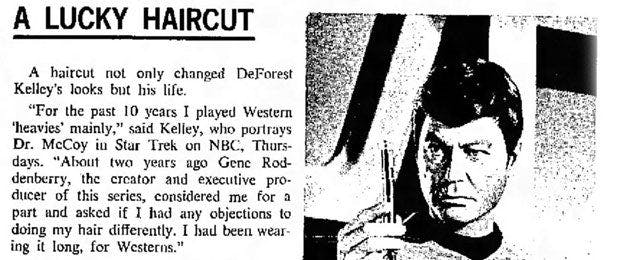
Today, John and Maria Jose Tenuto continue their four-part look at how the making of the futuristic Star Trek was charted through the prosaic and down-to-earth technology of newspapers during the past 50 years. The series of stories is based on their research of more than 1000 different articles. Part two boldly flips pages to explore how the press covered Star Trek in its earliest days...
Star Trek premiered on Thursday, September 8, 1966, at 7:30PM or 8:30PM depending on time zone in the United States. From the start, the majority of the press about the show was positive, recognizing the unique qualities of Star Trek. In fact, all the attention garnered by Star Trek in the press was an important factor in NBC’s decision to renew the show in its first and second seasons. Famed AP Hollywood correspondent Bob Thomas wrote in a 1967 article that one of the reasons that trade observers believed that Star Trek was renewed after its first season despite problem ratings was that “the NBC decision was influenced by the fact that Star Trek was a prestige show in a season that was sadly lacking in prestige” (from the May 28, 1967 syndicated column “’Star Trek’ Survives Stigma of Thinking Man’s TV Series”). Favorable reviews, fan mail from varying demographic groups, Emmy nominations for Leonard Nimoy, and generally consistent press coverage combined to help convince NBC of the value of renewing Star Trek.
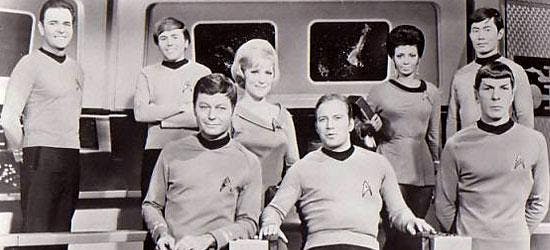
What were some examples of this favorable press? Star Trek was featured on the cover of TV Showtime, a supplement that appeared in many local newspapers, on September 18, 1966. Most of the reviews in newspaper archives we researched (although not all, as an infamously negative Variety appraisal of the show, illuminates) were actually good.

During the three-year run of the show, there were many articles about the actors and behind-the-scenes artists. Some of them reveal forgotten facts about the making of Star Trek that are amazing. Two of our favorites both have to do with... hair. A Kings Feature Service column by Charles Witbeck on December 4th, 1966, focuses on Leonard Nimoy and details that Gene Roddenberry first thought of casting Nimoy as an alien while filming his 1963-64 series The Lieutenant. “Roddenberry took one look at Nimoy, and vowed 'he would put pointed ears on that guy' if he ever got around to making a science fiction series.” Also interesting is the article’s mention that the look of Spock underwent several revisions. “For a while, Roddenberry thought Spock should have a bald head, and had several tests made of Nimoy minus bangs. Leonard did not like what he saw in the mirror, and fretted over the change. 'We were overdoing a good thing,' he said, and finally convinced the producer of the value of a good head of hair, something strangely prized by modern teen-agers.”
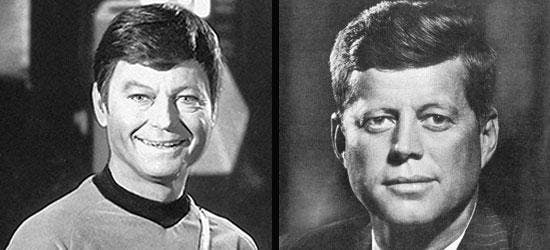
A second fascinating hair-related article is from a July 30, 1967, article by the Independent Star News of Pasadena, California about DeForest Kelley. The article reveals that executives were not keen of Kelley playing a heroic character like the ship’s doctor despite Roddenberry trying to get him cast for both pilots. Kelley was known as a good actor, but one that specialized in villainous characters, especially in westerns. Roddenberry had a flash of inspiration and asked Kelley to get a different haircut from the one he normally wore: one that would be like a famous and popular man known as a leader and for his intelligence. Perhaps the different look would help sell the idea that Kelley could indeed play a hero. “'It was expensive,'” said Kelley, “'It cost me $35 but I had confidence in Roddenberry.'” The person that Roddenberry asked Kelley to have his new haircut modeled after? President John F. Kennedy. The Kennedy-esque hairstyle worked, and Kelley credits it with changing his career and life.
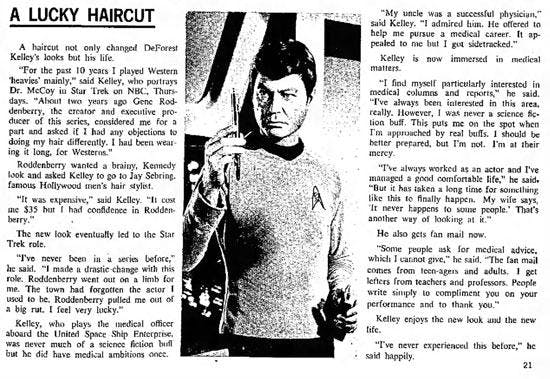
The newspaper press also helped inform fans of the danger of cancellation during the second season. By January and February 1968, articles start appearing in many local newspapers about the growing fan movement to save Star Trek from cancellation and earn it a third season renewal. UPI correspondent Vernon Scott wrote an article on February 7, 1968, entitled “Personal Note May Stop Star Trek Cancellation,” in which he gave the address to write to save the show and covered why so many people wanted the show renewed. The article reveals that Star Trek was also popular in Canada: “Canadians, too, are up in arms. It is the No. 1 series with our neighbors to the north.”
A trivia filled January 18, 1968, article by AP writer Cynthia Lowry predicted the show had an excellent chance of third season renewal, revealing that Star Trek usually came in second during its time slot and that NBC was happy with the show’s “quality audience.” The article details that, “The cost of reaching 1,000 homes now averages $4.30 in prime evening time. NBC’s Telephone Hour, for instance has a cost of $13, since the smaller the audience, the higher the cost. 'Star Trek' costs $4.70 per thousand, but as one research man observed, “The sponsors get that quality audience.'”
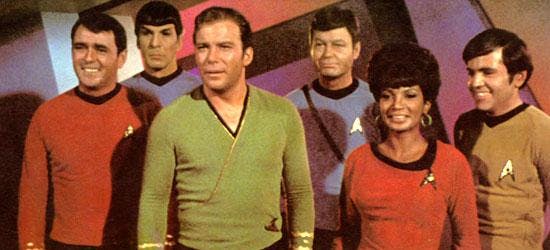
While not every article or review of Star Trek praised the show or understood its influence, most did. That positive press helped the show become a “prestige” vehicle for NBC. Newspapers also informed fans about the impending cancellation of the show, and played an important role in helping to keep the show on NBC’s schedule.
Next time, we will explore how the news media tried to find a way to cover the incredible and new phenomena of Star Trek conventions and something we call “Fanership.” In the meantime, click HERE to read part one of "Star Trek and Newspapers."
Maria Jose and John Tenuto are both sociology professors at the College of Lake County in Grayslake, Illinois, specializing in popular culture and subculture studies. The Tenutos have conducted extensive research on the history of Star Trek, and have presented at venues such as Creation Conventions and the St. Louis Science Center. They have written for the official Star Trek Magazine and their extensive collection of Star Trek items has been featured in SFX Magazine. Their theory about the “20-Year Nostalgia Cycle” and research on Star Trek fans has been featured on WGN News, BBC Radio, and in the documentary The Force Among Us. They recently researched all known paperwork from the making of the classic episode "Space Seed" and are excited to be sharing some previously unreported information about Khan's first adventure with fellow fans. Contact the Tenutos at jtenuto@clcillinois.edu or mjtenuto@clcillinois.edu.

